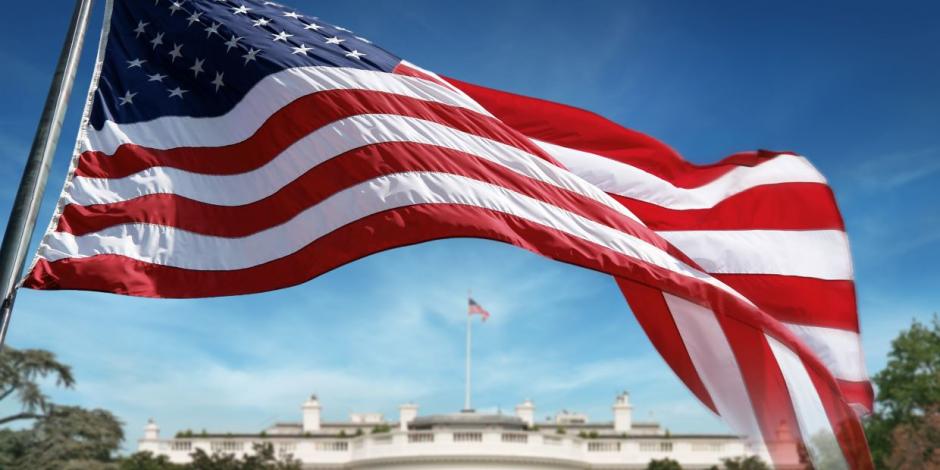Starten Sie den Audio-Text
Mit dem Audio-Player können Sie sich den Text anhören. Darunter finden Sie das Transkript.
Transcript: “The Star-Spangled Banner”
O say, can you see
By the dawnMorgendämmerungdawn’s early light
What so proudly we hail sth.etw. begrüßen, zujubelnhailed
At the twilight(Abend)Dämmerungtwilight’s last gleaming
Whose broad stripes and bright stars
Through the perilousgefährlich, bedrohlichperilous fight
O’er the rampartSchutzwall, Festungsmauerramparts we watched
Were so gallantlytapfergallantly streaming?
And the rockets’ red glaregrelles Lichtglare
The bombs bursting in air
Gave proof through the night
That our flag was still there
O say, does that star-spangled banner yet wave
O’er the land of the free and the home of the brave?
What’s it about?
The national anthem of the U.S. basically asks the question: “Is our flag still there?” It describes the American flag flying triumphantly after an attack by the country’s enemies.
Here, we’ve “translated” the lyrics into modern, everyday English:
Tell me, in the light of the early morning, can you still see the flag that we saluted so proudly at sunset last night?
Its wide stripes and bright stars flew bravely over the walls of our fort during the dangerous battle.
The light from the rockets and the exploding bombs showed us that the flag was still there.
Tell me, does the flag with its shiny stars still fly over the land of the free and the home of the brave?
Good to know
The lyrics were written in 1814 by American lawyer Francis Scott Key after he witnessed the British bombardment of Fort McHenry during the Battle of Baltimore. Key was inspired by seeing the U.S. flag flying above the fort the morning after the battle. His poem was set to the tuneMelodietune of a popular British song written by English composer John Stafford Smith, which was already popular in America. This later became “The Star-Spangled Banner,” and the song was adopt sth.etw. übernehmenadopted as the official national anthem of the U.S. in 1931. Even though the original poem had four stanza(Gedicht)Strophestanzas, only the first one is commonly sung today.
If you like this anthem...
...go to www.spotlight-online.de/poetry0225 to see Whitney Houston perform it at the Super BowlFinale der American-Football-ProfiligaSuper Bowl in Florida in 1991. “The Star-Spangled Banner” is notoriouslybekanntermaßennotoriously difficult to sing because of its wide range of 19 semitoneHalbtonsemitones, which make it difficult to land on the right noteTonnote without a wobbleSchwankenwobble. The words can be trickyschwierigtricky, too, as they are a bit of a tongue twisterZungenbrechertongue twister. Try saying “star-spangled banner” several times in quick in successionhintereinandersuccession and you might end up with “star-bangled spanner (UK)Schraubenschlüsselspanner.” It takes a confident and competent singer to perform the anthem live in a stadium, and Houston’s performance of it is often described as the greatest of all time.
Another iconic performance of the national anthem was Jimi Hendrix’s guitar solo at Woodstock in 1969. He transformed it into a soundscapeKlangteppichsoundscape of war, with the effects of gunfire and bombs. The performance was seen as an expression of the social and political issues of the time, such as the Vietnam War.
Neugierig auf mehr?
Dann nutzen Sie die Möglichkeit und stellen Sie sich Ihr optimales Abo ganz nach Ihren Wünschen zusammen.



